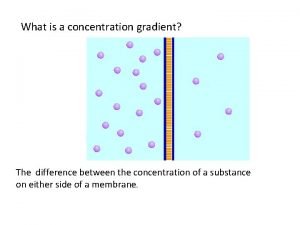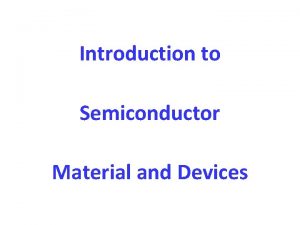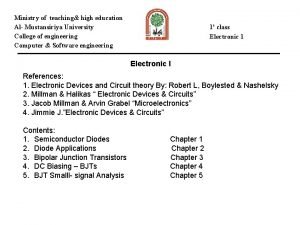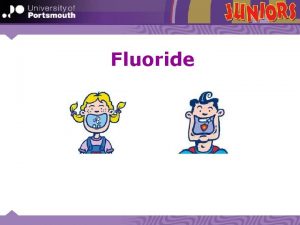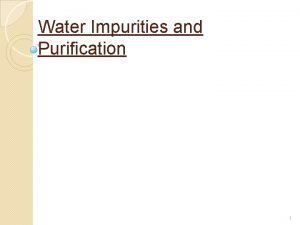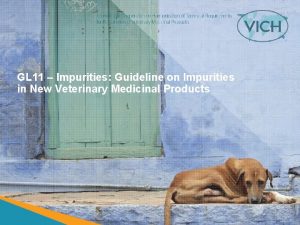Monitoring the Concentration of Fluoride and Other Impurities








- Slides: 8

Monitoring the Concentration of Fluoride and Other Impurities Across a Purification System Naomi Mburu University of Maryland, Baltimore County Supervisors: Beatrice Mandelli and Roberto Guida R&D for LHC Experiments

Background ● ● Resistive Plate Chambers(RPCs) are a type of muon detector that utilizes gas mixtures to induce avalanche ionization reactions Harmful impurities can damage the inside of the detector if they are not properly filtered Schematic of gas recirculation system at CMS Naomi Mburu, CERN Summer Student 2016 ● Gas mixtures must be recycled because they are expensive and may produce greenhouse effects ● Typical gas composition for RPC detectors: ○ 94. 7% Freon (C₂H₂F₄) to induce avalanche ionization ○ 5. 0% Isobutane (i-C₄H₁₀) for quenching ○ 0. 3% Sulfur Hexafluoride (SF₆) as a source of electronegativity Cross-section illustration of the components of the CMS detector 2

How do we monitor purification systems? Ion Selective Electrodes (ISE) • • Measures potential difference between sample and a standard, then utilizes Nernst Equation to solve for ion concentration Used to determine the accumulation of Fluoride ions over time before and after purifier Gas Chromatography (GC)/ Mass Spectrophotometry (MS) • GC separates gas components in time and quantifies them using chemically treated columns and a thermal conductivity detector (TCD) Schematic of the GC internal set-up • ISE Fluorine Monitor Naomi Mburu, CERN Summer Student 2016 • MS identifies components by ionizing and accelerating the sample in a magnetic field. Mass/charge ratios are then determined. Coupled together to allow for separation, quantification and identification of gas components 3

ISE Set-Up Goal: Monitor the levels of Fluoride build-up over time before and after the purifier Step 1: Calibrate Electrodes Step 2: Troubleshooting Step 3: Stability Tests Inner Stem Ideal Slope: 56+/-4 Naomi Mburu, CERN Summer Student 2016 Crystal Image from Hannainst. com 4

Installing ISE Station The ISE station is now installed and recording Fluoride concentration data Electrode Sample gas bubbler ISE installed at gas distribution racks Naomi Mburu, CERN Summer Student 2016 5

GC/MS Set Up Goals: 1. Troubleshoot Systems and couple GC with MS 2. Set up remote valve control 3. Identify new gas impurities before and after the purifier Image from Galaxie Manual Signal (μV) Schematic of valve controller set-up Micro gas chromatography machine Naomi Mburu, CERN Summer Student 2016 Time (Sec) Chromatograph 6

GC/MS Analysis Propane Difluoromethane Experimental Peak Freon Reference Peak Isobutane Sulfur Hexafluoride Naomi Mburu, CERN Summer Student 2016 GC/MS chromatograph 7

Conclusion • Gas mixture analysis is used to prevent aging of detector • ISE, GC, and MS can used to determine the amount, identity, and accumulation of gas system components. Acknowledgements • I would like to thank the NSF for funding my summer at CERN • I would also like to thank my supervisors, Beatrice Mandelli and Roberto Guida Naomi Mburu, CERN Summer Student 2016 8
 Whats concentration gradient
Whats concentration gradient Movement of high concentration to low concentration
Movement of high concentration to low concentration Trivalent and pentavalent impurities
Trivalent and pentavalent impurities A liaison is a thickener made from a mixture of *
A liaison is a thickener made from a mixture of * Structure and properties of ceramics
Structure and properties of ceramics The diffused impurities with
The diffused impurities with Examples of donor impurities
Examples of donor impurities Desvenlafaxine-succinate coupon
Desvenlafaxine-succinate coupon Common solvent impurities
Common solvent impurities
